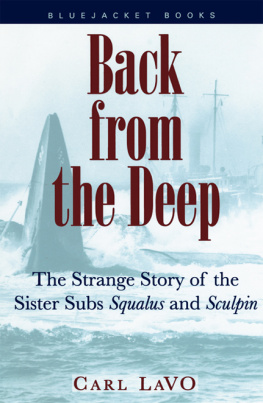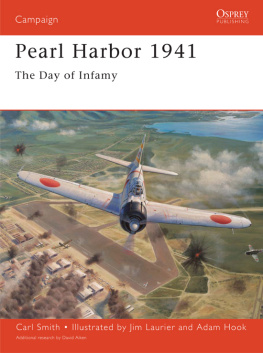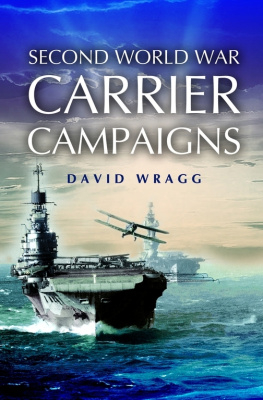This book has been brought to publication with the generous assistance of the United States Naval Academy Class of 1945.
BACK
FROM THE
DEEP
The Strange Story of the Sister Subs Squalus and Sculpin
Carl LaVO

BLUEJACKET BOOKS
NAVAL INSTITUTE PRESS
Annapolis, Maryland
This book has been brought to publication by the generous assistance of Marguerite and Gerry Lenfest.
1994 by Carl LaVO
All rights reserved. No part of this book may be reproduced or utilized in any form or by any means, electronic or mechanical, including photocopying and recording, or by any information storage and retrieval system, without permission in writing from the publisher.
First Bluejacket Books printing, 1998
ISBN 978-1-61251-170-2
The Library of Congress has cataloged the hardcover edition as follows:
LaVO, Carl, 1944
Back from the deep : the strange story of the sister subs
Squalus and Sculpin / Carl LaVO.
p. cm.
Includes bibliographical references (p.) and index.
ISBN 1-55750-507-1 (acid-free paper)
1. World War, 19391945Naval operationsSubmarine.
2. World War, 19391945Naval operations, American.
3. Sailfish (Submarine) 4. Sculpin (Submarine) I. Title.
D783.L38 1994
940.54'51dc20 94-25853
To the late Leo Haggerty (USS Seafox) who inspired me to write this book
To my wife, Mary Anne Ferber, who never lost faith, giving me the encouragement and support to see this through
To my beloved daughter, Genevieve, in appreciation of her patience and understanding during the years I was locked away in my den finishing this book
and
To veterans of the Squalus/Sailfish and the Sculpin who have helped me through those years.
He laughs as he turns and
hell dance until three
And hell flourish that tattoo
down under his knee.
When the dancing is finished,
hell talk until five,
Since with memories he lives,
with the ones who survived.
G. M. SOLAN, M.D., ROSE TATTOO
During the 1930s and 1940s, thousands of officers and enlisted men made the 200-mile journey from the national submarine training school in New London, Connecticut, to Portsmouth, New Hampshire, where mysterious black boats awaited them on the Pis-cataqua River. The births and the deaths of two of those vesselsthe twin submarines USS Sculpin (SS-191) and USS Squalus/Sailfish (SS-192)occupy a special niche in Portsmouths history.
These submarines were built by the U.S. Navy in the late 1930s in an era of great uncertainty about submarine safety. Between 1921 and 1939, twenty-two boats from Japan, England, France, Italy, and the United States were lost in peacetime accidents, claiming 1,096 lives. The mortality rate escalated sharply during World War II. By 1945, more than 40,000 submariners had perished on 1,100 boats worldwide.
For the United States, 374 officers and 3,131 enlisted men were lost on 52 submarinesthe highest fatality rate of any branch of the service. American casualty lists after the war showed that six submariners died for every nonsubmariner killed in action.
Submarine volunteers and the Navy always have realized the great risks to be assumed. Only oncein 1939 in the Atlantic Ocean off New Hampshirehas a crew been rescued from a submarine disaster at great depth. And during World War II, only a handful of survivors lived to tell about American submarines lost in battle. The underseas sailors who never came back vanished completely. But a few did return from the list of presumed dead, and counted among them are surviving crewmembers of the Squalus and the Sculpin.
Today, the Sculpin lies a twisted hulk in a nameless patch of the Central Pacific, five miles down in the perpetual darkness of the ocean floor. All that remains of the Squalus (known as the Sailfish during the war) is her salvaged bridge, enshrined in the Portsmouth Naval Shipyard. In the late spring of each year, townspeople gather around the memorial and recall the men who went to sea on the two boats. Occasionally, surviving veterans join them to tell of the triumph, tragedy, humor, and despair that shaped their lives for eight years on three continents, two oceans, and in one war. For them, it is a revival of a very special brotherhood honed from tense years at war, a time when these men were unlike the crews of any other naval vessels.
They were the soul of the Silent Service, as the wartime submarine navy came to be known. They are today a legion steeped in honor, tightly bound with a strong sense of pride and general reluctance to discuss wartime experiences with outsiders. So mysterious were their comings and goings during the war that occasionally their unmarked submarines were mistaken for the enemy and bombed by friendly forces. For years after the war, the nation knew little of the sacrifice of these men. But they never objected, never claimed to be owed anything. Rather, they remained within the code of their service long after the war.
This is the true story of those who sailed the Sculpin and the Squalus/Sailfish through seven incredible years that wove a strange destiny for the survivors of both boats.
I am grateful to the following, who aided me in editing portions of the rough draft of this book:
Joseph Tucker, Sailfish lieutenant; George Brown, Sculpin lieutenant, the only officer to survive captivity; Carl Bryson, Gerald McLees, and Jud Bland, Squalus survivors; Aaron Reese, Sailfish-Sculpin veteran; Lester Bayles and Larry Macek, Sailfish veterans; George Rocek, Edwin Keller, and Billie Minor Cooper, Sculpin survivors; and Arthur G. McIntyre, the senior American officer held captive in Ashio in 1945.
Also a note of appreciation to Michael Talbot, the Australian author who assisted me in my Albany-Perth research; Capt. Frank Wheeler, an Annapolis classmate of Sailfish captain Robert Ward; Mark Gatlin, acquisitions editor at the NIP who was enthusiastic and supportive from the beginning; Therese Boyd, superb copyeditor who fine-tuned the manuscript for me; my father, a veteran of the destroyer USS Halford, who gave me a feel for the Pacific war; and my wife, Mary Anne, who made significant contributions to the direction of the manuscript and helped sharpen the overall story. I couldnt have done it without her.
Out of the deep, the oily black deep,
Returned from the limbo of doom,
Comes a cargo of men, white silent men,
Back from a watery tomb.
WILLIAM E. BABER, SUBMARINE (1943)
Capt. Robert E. M. Ward and two lookouts ducked, putting their backs to the force of 50-foot breakers. With undiminished fury, the waves knocked them against the bridge coaming and then flung them backwards against the periscope sheers. Wind-driven bullets of seawater blistered their eyes and chiseled relentlessly at their faces. Still, they fixed their stares into binoculars that butted sharply against their eye-sockets, bruising them in the wild motions of the boat. Although Ward clenched a towel around his neck, he could not stem the flow of frigid water beneath his rubberized parka, high-waisted pants, and wool sweater. Shuddering, he followed the bows unbroken line to where it disappeared in an inky fog.











